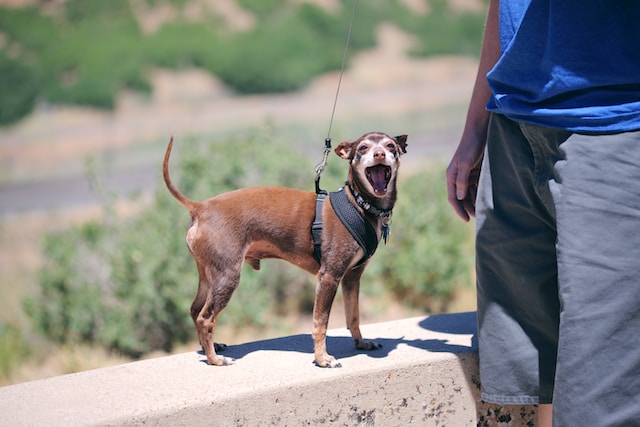Why Do Dogs Wag Their Tails? Here are the Things you Need to Know

Dogs are emotionally expressive beings, using various means to convey emotions in place of human language. One of these means is tail wagging. To us, a dog wagging its tail often signifies happiness. However, besides expressing happiness, what other emotions can dogs convey through tail wagging?
The Importance of the Tail in Expressing Emotions
A dog’s tail serves various purposes, aside from maintaining balance, and the most significant purpose is expressing emotions. Throughout history, people have commonly associated tail wagging with a dog’s happiness. Indeed, when playing with dogs or rewarding them with treats, dogs tend to wag their tails.
Dogs, unlike humans, don’t communicate through speech but rather through body language. Tail wagging is also a crucial means of conveying emotions to peers.
Does this mean that dogs with short tails or no tails are relatively less “articulate”?
Experimental research has shown that dogs with short, missing, or docked tails often struggle to communicate with peers and are not as skilled at interaction.
Aside from conveying feelings of joy, tail wagging holds various meanings. However, can such a range of emotions really be expressed solely through tail wagging?
The key lies in the height and speed of the wagging.
What Does the Height of Their Tails Convey?
Generally, confident dogs looking to establish dominance among their peers will raise their tails high. Wolves, the ancestors of dogs, were pack animals, and the leader of a wolf pack would signal using its tail. Thus, when dogs feel excellent about themselves, their tails will be held high.
Dogs that carry their tails high are often in a good mood. Conversely, when dogs are in a negative mood, their tails will droop, often expressing caution, unease, fear, and other emotions. The lower the tail, the stronger the negative emotion.
If a dog tucks its tail between its legs, it’s likely extremely fearful. However, like humans, dogs respond differently when faced with threats or fear. Some dogs may display submission and retreat, while others, due to heightened nervousness, might resist and exhibit strong aggression.
What Does the Speed of Tail Wagging Represent?
If tail wagging is a sign of happiness and joy, what does the speed of wagging convey? Typically, more excited dogs will wag their tails vigorously, while the swinging amplitude of the tail will slow down when a dog’s mood is stable.
However, it’s important to note that even though some dogs wag their tails, it doesn’t necessarily mean they’re friendly. You might have experienced being barked at by a stranger’s dog with its tail wagging forcefully. To avoid such situations, judge the dog’s character and current state based on its eye and ear movements.
Does the Direction of Tail Wagging Matter?
An Italian research group published a paper on dogs’ emotional expressions. Both human and dog brains are divided into left and right halves, with the left hemisphere associated with positive emotions and the right hemisphere with negative emotions.
Moreover, the mapping of brain activity to body movements is reversed: the left hemisphere predominantly controls the right side of the body, and the right hemisphere mainly controls the left side. Consequently, when a dog is happy and friendly, it tends to wag its tail to the right, whereas when it’s anxious or fearful, it tends to wag its tail to the left.
What if a Dog Doesn’t Wag Its Tail?
A dog’s tail is connected to its tailbone and can be controlled by many muscles. Due to the presence of bones, dogs might refrain from wagging their tails due to fear of injury or dislocation.
Alternatively, a dog might have a sore muscle from excessive wagging or might not want to wag its tail due to physical discomfort or a low mood. If you’re concerned, you can gently touch the dog’s tail; if it reacts painfully or dislikes being touched, it might be injured.
While we commonly associate tail wagging with happiness, it’s clear that this is not the only meaning. Dogs may not speak like humans, but they possess rich emotional expression, and tail movements can convey a lot. Pay close attention to tail movements and enjoy the communication between you and your dog!
